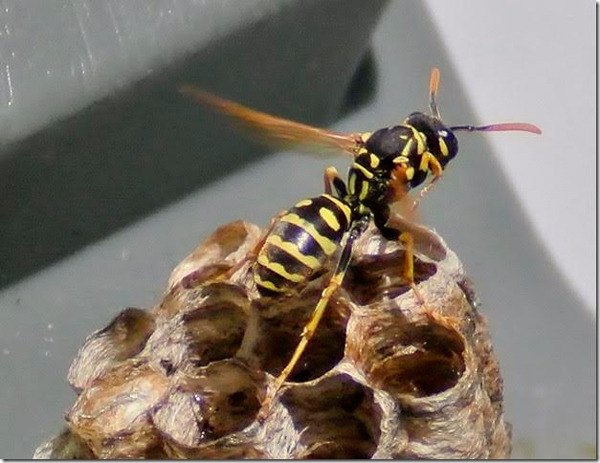By Cali Bagby
Interim editor
Summer on the islands is marked by farmers’ markets, sunset walks on the beach and barbecues at the park. On the flip side these warmer months also signify the return of wasps.
According to Russel Barsh, director of the Lopez-based nonprofit laboratory Kwiaht, there are at least seven species of wasps in the Northwest, including native and introduced European and Western yellow jackets, bald-faced hornets and paper wasps. The Journal wants to know: are there more wasps out and about this summer?
Weather
Barsh said that the weather in spring is one way to determine an abundance of yellow jackets or wasps. A cool wet spring decreases wasp populations because it reduces the survival of the previous year’s queens, which must spend winter in a tree cavity, under a log, or in a wood-pile until the weather is warm enough for them to emerge, hunt and start laying eggs, he said. Since we had a mild spring we should be seeing a small increase in the population.
Barsh added that the recent heat wave has caused plants to flower early, which in turn attracted insects earlier in the season.
“While some insect species just finished their year early and have gone dormant, some social insects remained active and are raising larger families as the summer lingers on,” said Barsh. “The later-emerging wasps and predatory flies and beetles are not doing super well because there’s not much left around to eat, but they are relatively numerous and diverse for now, surviving more on flower nectar than prey, and in my experience, behaving rather gently.”
The colony
According to “Yellow Jackets and Paper Wasps” by WSU entomologists Arthur L. Antonelli and Roger Akre, in the late summer-early fall, worker yellow jacket populations and their colonies are at their peak. Then the colony begins to decline, and their deserted nests disintegrate rapidly in winter.
Antonelli and Akre wrote that maximum population size is attained in August or September. Their article stated that although most people consider these winged creatures to be pests, we may not want to see a diminished population because of the benefits they provide.
“Yellow jackets and paper wasps feed their young numerous insects that ordinarily damage shade trees and crops,” wrote Antonelli and Akre. “They also kill countless houseflies and blow flies. Yellow jackets and paper wasps scavenge for meat and sweets and can become pests, especially at picnics and campgrounds.”
Wasps also eat large quantities of garden pests including aphids, beetle larvae and more, Barsh said, but they also eat pollinators including honeybees, and flower flies, as well as other useful insect-controllers such as spiders.
Control
To control populations of wasps, he recommends removing paper wasp nests, characterized by having open combs with cells. Nests that are close to doors, windows and patios should be the highest priority. Always remove nests at night when the insects are home and dormant and as soon as they appear in the early summer, he added.
Antonelli and Akre recommend if you are allergic to wasp stings, do not risk removing the nest yourself.
“Some people react strongly to the stings of bees and wasps,” they wrote. “Symptoms can include swelling, nausea, dizziness, difficulty with breathing, and shock. Symptoms may be immediate or delayed for several hours.”
As for the popular yellow cone traps you can purchase, Barsh said they kill lots of wasps, but the colonies will likely survive.
“Avoid chemicals – knockdown sprays use extremely toxic and persistent chemicals that kill all insects including bees,” he said.
Yellow jackets and paper wasps do not reuse their nests the following year, although paper wasps may construct a new nest adjacent to an old one, according to Antonelli and Akre. If you choose to leave the wasps alone, the nest will usually disintegrate over the winter months.
According to Barsh most yellow jackets are also “naturally controlled” by other wasps, mites, and bacterial, viral and fungal infections.
“By far the best advice is: don’t get near a nest, don’t look or smell like a flower,” he said. “And if you want to dine al fresco during the summer months, leave a few traps out around the patio or garden area you’d like to use,” he said.
For more information, read “Yellow Jackets and Paper Wasps” by Akre and Antonelli here.




